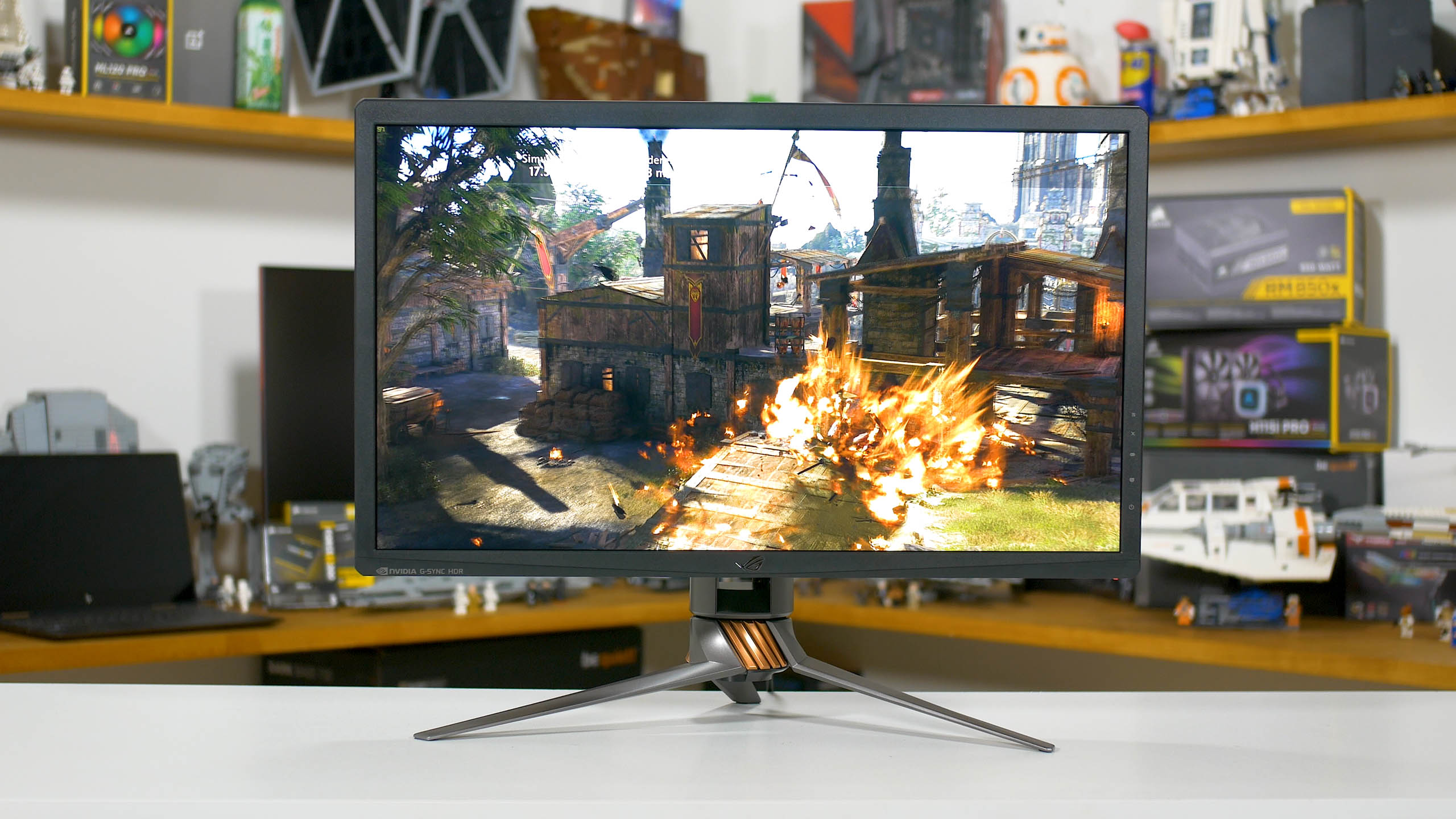Chroma Subsampling Issues
Of course there is one elephant in the room, and that's the issue with refresh rates and chroma subsampling. The PG27UQ can only natively support full 4:4:4 RGB sampling at 10-bit HDR at 4K at a maximum refresh rate of 98 Hz. It can also only support 4:4:4 sampling of 8-bit SDR 4K content at 120 Hz. This is entirely down to DisplayPort 1.4's bandwidth: there simply is not enough bandwidth to display 4:4:4 10-bit 4K content at 144 Hz, don't blame Asus or AU Optronics for this one, the technology just isn't there right now.
Now you might recall this monitor is actually a 144 Hz panel, so this throws up a bit of an issue. To achieve 144 Hz through DP 1.4, Asus has resorted to 4:2:2 chroma subsampling for HDR content above 98 Hz, and SDR content above 120 Hz. What 4:2:2 subsampling means is you are getting full 4K luminance resolution, but chrominance resolution is below 4K, approximately 1440p for simplicity's sake. So for every group of four pixels you are getting 4 luma samples and 2 chroma samples.

This sounds bad, but luckily for humans, the eye is more sensitive to luminance than chrominance, so for general imagery there is very little difference between 4:4:4 and 4:2:2 content. In the games I tested and videos I watched, I honestly could not tell the difference between the two sampling schemes. This isn't a shock really, because Blu-rays and even UHD Blu-Rays actually use a more aggressive 4:2:0 subsampling method and Blu-ray quality is, of course, fantastic for video.
However, 4:2:2 subsampling is noticeable in desktop apps, and also in some very specific game menus if you look quite closely. Anything with clearly defined edges on solid backgrounds, particularly fine edges like text, will have edge artefacts with 4:2:2 subsampling provided that edge has a color component. So black text on a white background is not affected, but blue text on a green background, for example, is heavily affected.


4:2:2 subsampling is a minor issue, but it does result in a noticeable quality loss for desktop usage. I'd advise running the panel at a maximum of 120 Hz in the SDR mode (and that's what I tested with later) so you don't run into subsampling while using desktop apps.
What refresh rate you should use for games is trickier. HDR gaming is limited to 98 Hz without subsampling, and in most cases your graphics card probably won't be powerful enough to run at above 4K and 98 FPS. I tested with a Titan XP and 60 FPS is more around the mark in modern games. So if you're not actually running above 98 FPS, I'd limit the monitor to 98 Hz to avoid subsampling just in case there is some quality loss.
But realistically, you're not going to notice any significant quality loss in games by opting to run at 144 Hz with subsampling. Even in games that do have menus with coloured texts and backgrounds, the font size is usually large enough that the artefacts are practically invisible unless you are hunting for them. So if you have the power to play at 4K 144 FPS, you can still get a good experience running the monitor at 144 Hz with that extra bit of smoothness compared to 98 Hz.
Of course, the subsampling issue isn't ideal because you should switch back to 120 or 98 Hz for desktop usage, and ideally the full refresh range would be accessible without a quality loss. However, AU Optronics has developed a panel capable of 4K 144 Hz before display interfaces could support it properly, so this compromised solution is literally the best we've got right now.
